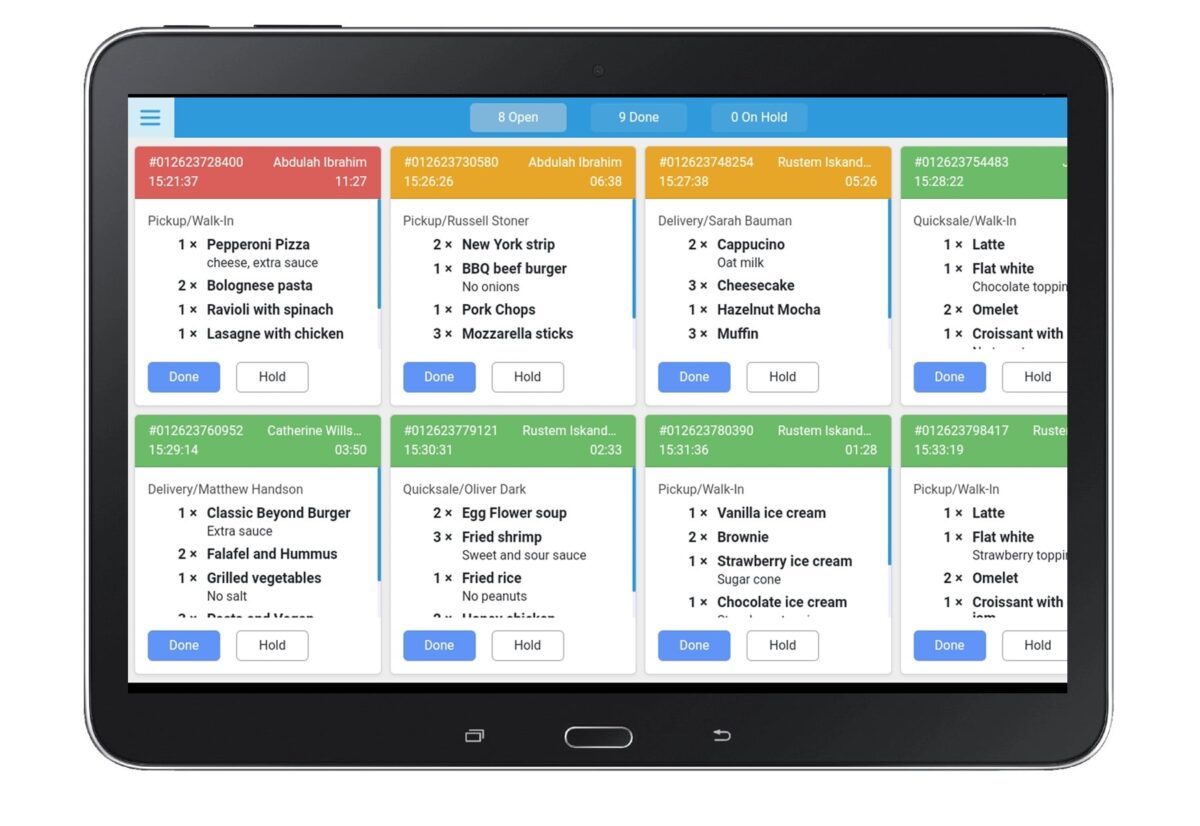In the fast-paced environment of the restaurant industry, efficiency is paramount to success. From order management to food preparation, every aspect of the kitchen workflow needs to be streamlined for optimal performance. This is where Restaurant Kitchen Display Systems (RKDS) come into play, revolutionizing the way restaurants manage their kitchen operations.
1. Introduction to Restaurant Kitchen Display Systems (RKDS)
Restaurant Kitchen Display Systems, often abbreviated as RKDS, are digital platforms designed to enhance communication and coordination in restaurant kitchens. Unlike traditional paper-based order tickets, RKDS utilizes advanced technology to display orders in real-time, facilitating smoother workflow and reducing errors.
2. Evolution of Kitchen Management Systems
Traditionally, restaurants relied on manual methods for order management and kitchen communication. However, as technology evolved, so did the need for more efficient systems. This led to the development of Kitchen Management Systems (KMS), which eventually gave rise to Restaurant Kitchen Display Systems.
3. Importance of Efficiency in Restaurant Operations
Efficiency is crucial in the restaurant industry to meet customer expectations and maximize profitability. With RKDS, restaurants can streamline their operations, minimize wait times, and ensure that orders are prepared accurately and promptly.
4. Key Features of Restaurant Kitchen Display Systems
RKDS come with a range of features designed to optimize kitchen workflow, including:
- Real-time order updates
- Customizable display layouts
- Integration with point-of-sale (POS) systems
- Ticket tracking and routing
- Order prioritization based on time or urgency
5. Benefits of Implementing RKDS
Implementing RKDS offers numerous benefits for restaurant owners and staff, such as:
- Improved order accuracy
- Faster order processing times
- Enhanced communication between front-of-house and kitchen staff
- Reduced reliance on paper tickets, leading to a more sustainable operation
6. Types of Restaurant Kitchen Display Systems
RKDS come in various forms to suit different restaurant setups and preferences:
– Traditional Systems
These systems feature dedicated display screens in the kitchen area, typically connected to the POS system via cables.
– Touchscreen Systems
Modern RKDS often utilize touchscreen displays for easy navigation and customization.
– Mobile Integration
Some RKDS offer mobile apps that allow kitchen staff to view and manage orders remotely, increasing flexibility and mobility.
7. Factors to Consider When Choosing a RKDS
When selecting a RKDS for your restaurant, it’s essential to consider factors such as:
- Scalability
- Integration capabilities with existing systems
- Ease of use and customization
- Technical support and maintenance options
- Cost-effectiveness
8. Installation and Integration Process
The installation and integration of RKDS typically involve:
- Assessing the restaurant layout and kitchen workflow
- Installing display hardware and software
- Configuring integration with the POS system
- Conducting staff training on system usage and maintenance
9. Training Staff for RKDS Usage
Proper training is essential to ensure that kitchen staff can effectively use the RKDS. Training sessions should cover:
- Navigation of the display interface
- Order processing procedures
- Troubleshooting common issues
- Best practices for maintaining system efficiency
10. Common Challenges and How to Overcome Them
While RKDS offer numerous benefits, they may also present challenges such as technical glitches or resistance from staff. To overcome these challenges, it’s crucial to:
- Provide ongoing technical support and training
- Encourage open communication and feedback from staff
- Address any concerns or issues promptly to maintain staff confidence in the system
11. Case Studies: Successful Implementations of RKDS
Several restaurants have successfully implemented RKDS and seen significant improvements in efficiency and customer satisfaction. Case studies can provide valuable insights into best practices and potential challenges to consider when implementing RKDS in your restaurant.
12. Future Trends in RKDS Technology
As technology continues to advance, RKDS are expected to evolve further, with features such as:
- Artificial intelligence for predictive order routing
- Enhanced integration with online ordering platforms
- Seamless communication with front-of-house and delivery staff
- Integration with Internet of Things (IoT) devices for real-time monitoring and control
13. Cost Analysis: Investing in RKDS
While implementing RKDS requires an initial investment, the long-term benefits often outweigh the costs. A thorough cost analysis should consider factors such as:
- Hardware and software costs
- Installation and integration fees
- Potential savings from improved efficiency and reduced errors
- Return on investment (ROI) over time
14. Customer Satisfaction and Feedback
Ultimately, the success of RKDS hinges on customer satisfaction. By streamlining kitchen operations and ensuring prompt service, RKDS can enhance the overall dining experience and encourage repeat business. Collecting feedback from customers can provide valuable insights into areas for improvement and further optimization of the system.
15. Conclusion: Enhancing Restaurant Efficiency with RKDS
In conclusion, Restaurant Kitchen Display Systems represent a significant advancement in kitchen management technology, offering restaurants the opportunity to streamline their operations, improve efficiency, and deliver exceptional customer experiences. By carefully selecting and implementing the right RKDS for their needs, restaurant owners can stay ahead of the competition and thrive in today’s fast-paced industry.
Unique FAQs:
- Can RKDS be customized to suit the specific needs of my restaurant?
- Yes, RKDS are highly customizable and can be tailored to accommodate various kitchen workflows and preferences.
- What type of technical support is available for RKDS users?
- Most RKDS providers offer comprehensive technical support, including troubleshooting assistance and software updates.
- Is staff training provided as part of the RKDS implementation process?
- Yes, training sessions are typically included to ensure that kitchen staff are proficient in using the RKDS effectively.
- How long does it take to install and integrate RKDS into a restaurant’s existing system?
- The installation and integration process can vary depending on the complexity of the setup, but it usually takes a few days to complete.
- What are some potential challenges associated with RKDS implementation?
- Common challenges include technical issues, staff resistance to change, and the need for ongoing maintenance and support. However, these challenges can be overcome with proper planning and communication.
